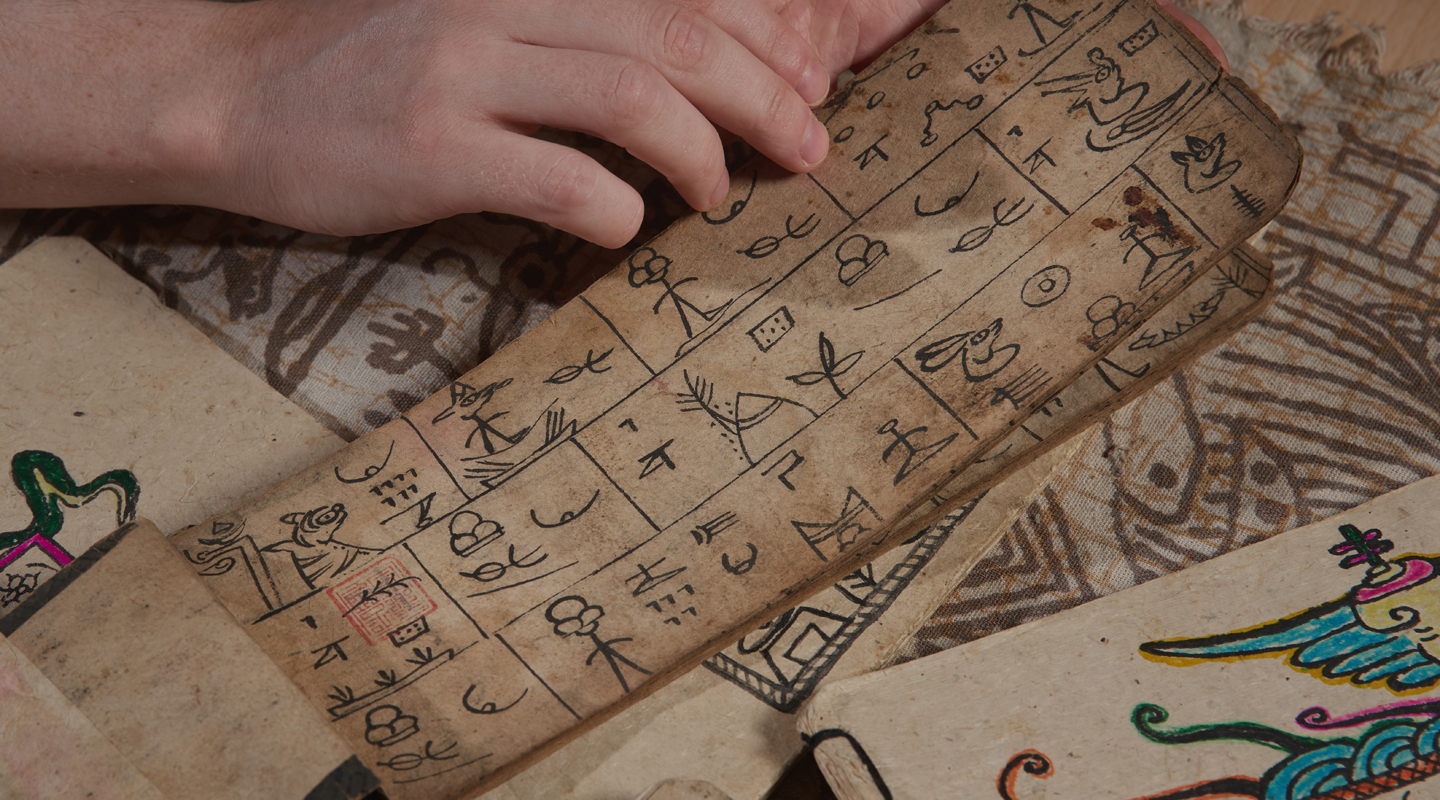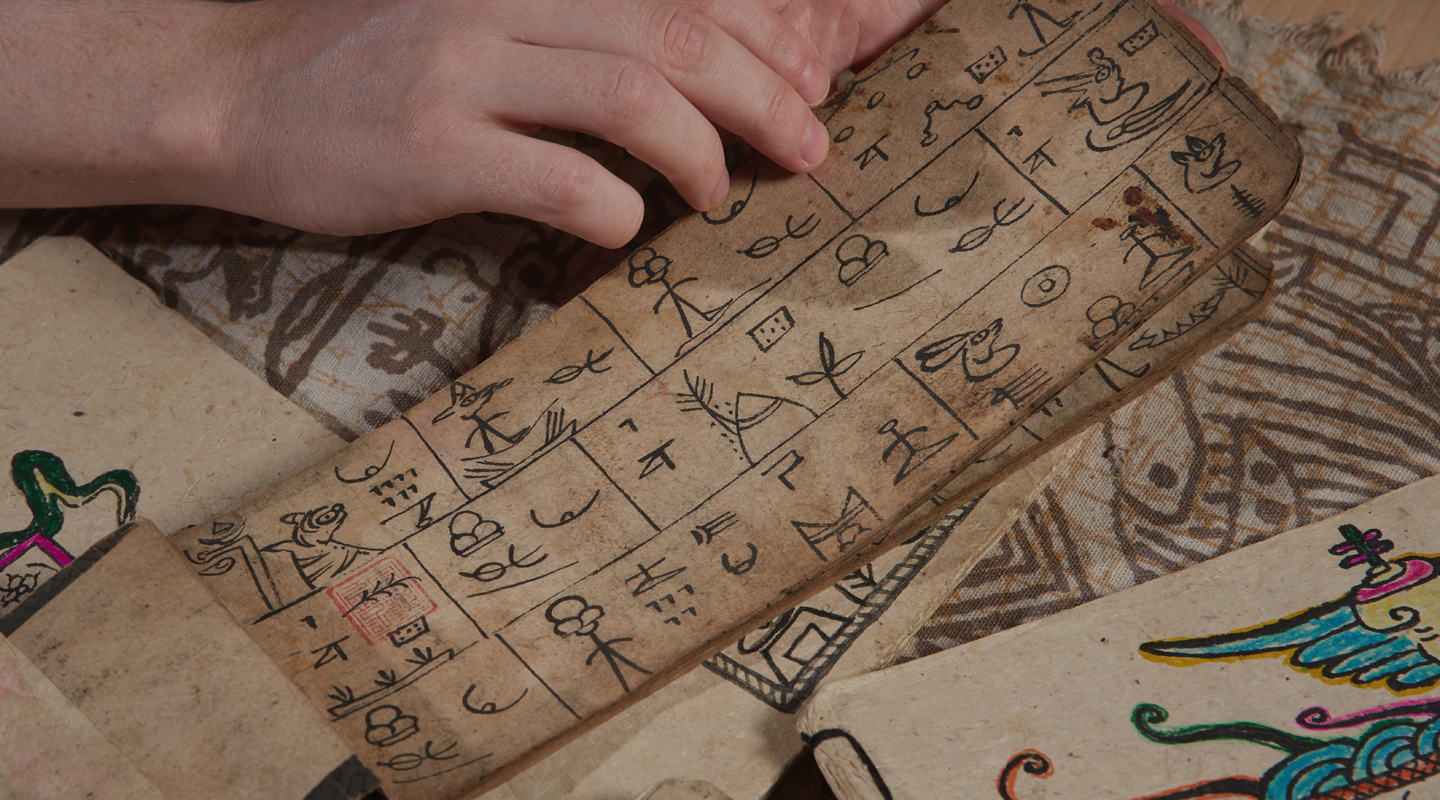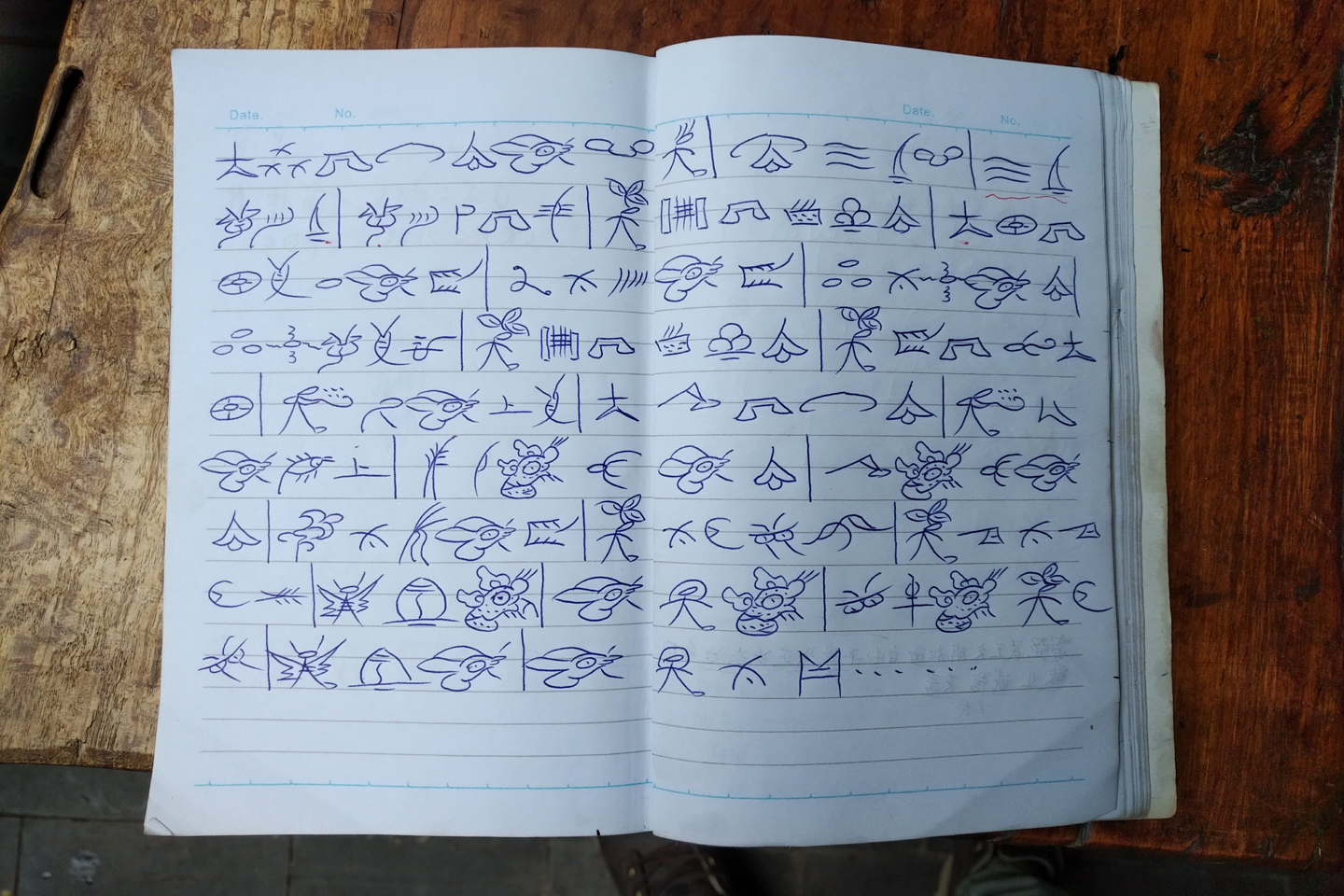News and Events
Writing on the Edge
 |
||
| One day, down the eastern end of the Himalayas, the local Naxi people built a fire. It was for those of their children who had killed themselves to escape from arranged marriages, which had become the norm ever since the Qing Empire imposed direct rule on the community and brought in Confucianism. Seated before the fire, crowned, their priest, the dongba, opened a book with rows after rows of drawings of everything from the beasts on the earth to the stars in the sky. The long strings of pictures made no sense to the lay person, but for the priest, it was a message to the young martyrs, a plea he must now chant for their roaming spirits to join their ancestors in the afterlife: | ||
|
||
| Many years later, the book, begrimed by the ritual fire and worn out after a century of wars and turmoil, found its way to Prof. Duncan Poupard’s office at the Department of Translation. The odyssey of the book through time is in many ways the story of the enigmatic, uniquely pictorial script in which it was written—hoarded by the priests for centuries, suppressed as a relic of a toxic culture, now rediscovered with renewed interest in it. But while the book must end up perishing as its materiality dictates, the professor believes that the writing system, a linguistic miracle, can—and should—live on. | ||
| To view full story, please visit CUHKUPDates website. |








